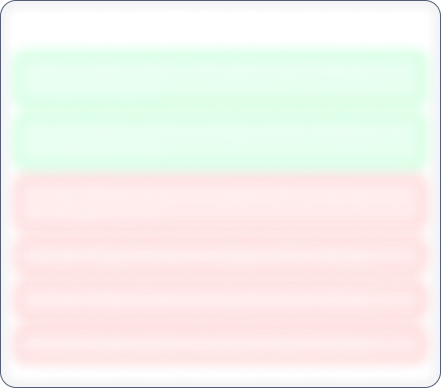Year End Sale 50% off
Shanti Gold International

No Data Available
Investor Sentiment
Shanti Gold International Share price and Fundamental Analysis
Key Metrics
Included In
Stock Returns
Stock Heatmap

No Stocks
Smart Score

Unlock Smart Score
See Detailed Analysis & Insights


Unlock Insights
See Detailed Analysis & Insights
Technicals
Returns Calculator
If you would have investedResearch Report
No Research Report
Corporate Action

No Data Available
Financials
Key Ratios
ROE
Avg ROE (3 Yrs) : NaN%
ROCE
Avg ROCE (3 Yrs) : NaN%
ROA
Avg ROA (3 Yrs) : NaN%
NPM
Avg NPM (3 Yrs) : NaN%
Dividend History
5 Year FactSheet
Documents

No Data Available
News
Shanti Gold International Management and History
Company Management


Unlock Management Data
See Detailed Analysis & Insights
Company History
Shanti Gold International Limited was originally formed as a partnership Firm in the name and style of 'M/s Shanti Gold' pursuant to partnership deed dated August 05, 2003. Subsequently, the name of the Firm was changed to 'M/s. Shanti Gold International'. In accordance with the provisions of Part IX of the Companies Act, 1956, the partnership Firm was converted to a Public Limited Company as Shanti Gold International Limited', and a fresh Certificate of Incorporation dated November 01, 2013 was issued by the RoC. The Company was granted the Certificate of Commencement of Business on November 22, 2013 by the RoC.
Company is one of the leading manufacturers of high-quality 22kt CZ casting gold jewellery, in terms of installed production capacity, specializing in the design and production of all types of gold jewellery. Company offers a wide range of high-quality, intricately designed pieces, including bangles, rings, necklaces, and complete jewellery sets across various price points ranging from jewellery for special occasions, such as weddings to festive and daily-wear jewellery.
The Company began its journey in 2007-08 by providing sales of the products to customers in UAE. Later, it commenced sales to retail businesses in Kerala Chennai, Andhra Pradesh, Punjab and Uttar Pradesh in 2012. Gradually, it produced more than 1,000.00 kgs of 22kt CZ casting gold jewellery in 2022. The Company is presently having an installed production capacity of 2,700 kilo grams per annum by establishing a new facility in Andheri (E), Mumbai since 2024.
The Company is planning a fresh issue equity shares of upto 18,096,000 of face value of Rs. 10/- each through IPO.
Shanti Gold International Share Price
Shanti Gold International share price reflects investor sentiment toward the company and is impacted by various factors such as financial performance, market trends, and economic conditions. Share price is an indicator which shows the current value of the company's shares at which buyers or sellers can transact.
Shanti Gold International Market Cap
Market capitalization of Shanti Gold International indicates the total value of its outstanding shares. Marketcap is calculated by multiplying share price and outstanding shares of the company. It is a helpful metric for assessing the company's size and market Valuation. It also helps investors understand how Shanti Gold International is valued compared to its competitors.
Shanti Gold International PE Ratio
Shanti Gold International PE ratio helps investors understand what is the market value of each stock compared to Shanti Gold International 's earnings. A PE ratio higher than the average industry PE could indicate an overvaluation of the stock, whereas a lower PE compared to the average industry PE could indicate an undervaluation.
Shanti Gold International PEG Ratio
The PEG ratio of Shanti Gold International evaluates its PE ratio in relation to its growth rate. A PEG ratio of 1 indicates a fair value, a PEG ratio of less than 1 indicates undervaluation, and a PEG ratio of more than 1 indicates overvaluation.
Shanti Gold International ROE (Return on Equity)
Return on Equity (ROE) measures how effectively Shanti Gold International generates profit from shareholders' equity. A higher ROE of more than 20% indicates better financial performance in terms of profitability.
Shanti Gold International ROCE (Return on Capital Employed)
Return on Capital Employed (ROCE) evaluates the profitability of Shanti Gold International in relation to its capital employed. In simple terms, ROCE provides insight to investors as to how well the company is utilizing the capital deployed. A high ROCE of more than 20% shows that the business is making profitable use of its capital.
Shanti Gold International Total Debt
Total debt of Shanti Gold International shows how much the company owes to either banks or individual creditors. In simple terms, this is the amount the company has to repay. Total debt can be a very useful metric to show the financial health of the company. Total debt more than equity is considered to be a bad sign.
Shanti Gold International Debt to Equity Ratio
The Debt-to-Equity (DE) ratio of Shanti Gold International compares its total debt to shareholders' equity. A higher Debt to Equity ratio could indicate higher financial risk, while a lower ratio suggests that the company is managing its debt efficiently.
Shanti Gold International CAGR (Compound Annual Growth Rate)
CAGR shows the consistent growth rate of Shanti Gold International over a specific period, whether it is over a month, a year, or 10 years. It is a key metric to evaluate the company’s long-term growth potential. Main metrics for which CAGR is calculated are net sales, net profit, operating profit, and stock returns.
Shanti Gold International Technical Analysis
Technical analysis of Shanti Gold International helps investors get an insight into when they can enter or exit the stock. Key components of Shanti Gold International Technical Analysis include:
Support Levels (S1, S2, S3)
There are usually multiple support levels, but the main support levels for a stock are S1, S2, S3. Support levels indicate price points where stock might get support from buyers, helping the stock stop falling and rise.
Resistance Levels (R1, R2, R3)
There are usually multiple resistance levels, but the main resistance levels for a stock are R1, R2, R3. Resistance levels represent price points where Shanti Gold International shares often struggle to rise above due to selling pressure.
Shanti Gold International Dividends
Dividends refer to the portion of the company’s profits distributed to its shareholders. Dividends are typically paid out in cash and reflect Shanti Gold International ’s financial health and profitability.
Shanti Gold International Bonus Shares
Bonus shares are usually given by companies to make the stock more affordable, increase liquidity, boost investor confidence, and more.
Shanti Gold International Stock Split
Stock split increases the number of its outstanding shares by dividing each existing share into multiple shares. When the company offers a stock split, the face value of the stock reduces in the same proportion as the split ratio.
Shanti Gold International Financials
The financials of Shanti Gold International provide a complete view to investors about its net sales, net profit, operating profits, expenses, and overall financial health. Investors can analyze financial data to assess the company’s stability and also understand how the company has been growing financially.
Shanti Gold International Profit and Loss Statements
The profit and loss statement of Shanti Gold International highlights its net sales, net profit, total expenditure, and operating profits in the current financial year. This Profit and Loss statement is crucial for evaluating the profitability and financial stability of Shanti Gold International .
Shanti Gold International Balance Sheet
The balance sheet presents a snapshot of Shanti Gold International ’s assets, liabilities, and equity of shareholders, providing insights into the financials of the company.
Shanti Gold International Cashflow Statements
Cashflow statements track the company's cash inflows and outflows over a period. It is an essential tool for understanding how well the company manages its liquidity and finances.


